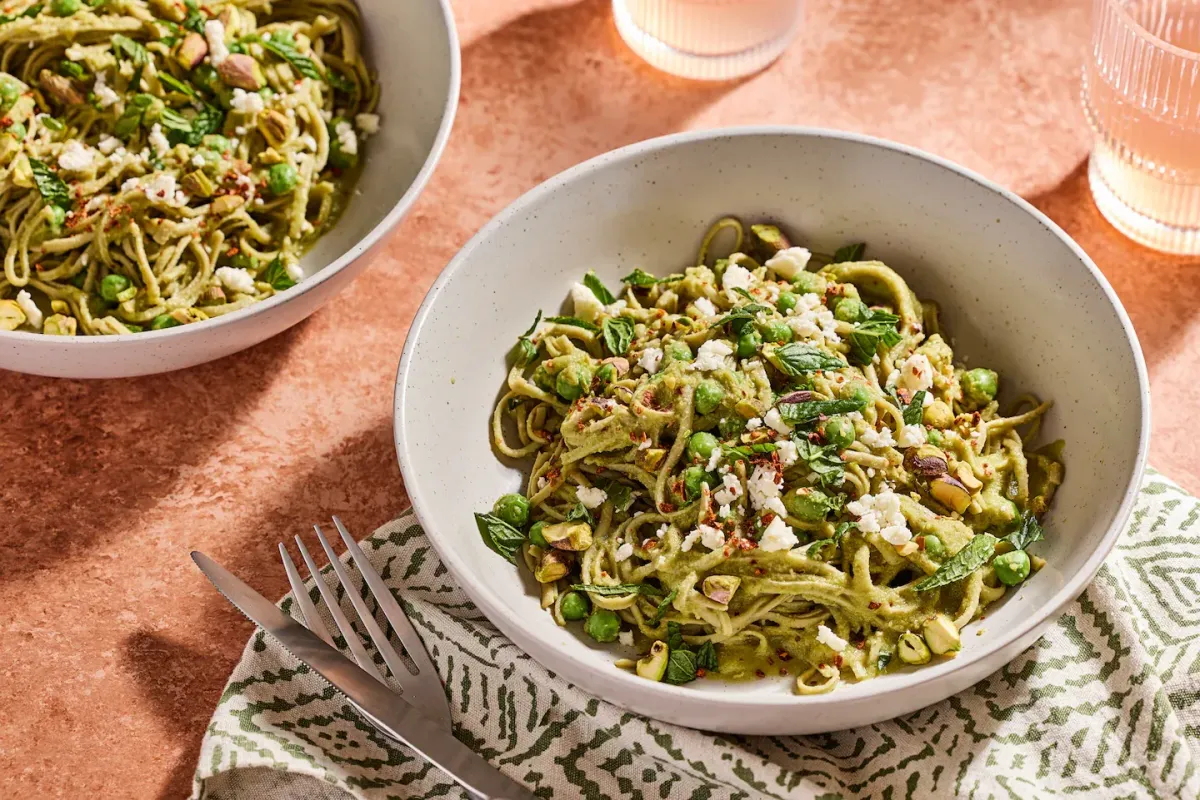
Noodles.... With Benefits!
If you're trying to eat more protein and fiber, there’s a surprisingly easy solution that doesn’t require eating more chicken or adding yet another scoop of protein powder: Try legume pasta.
Legume pastas are made from beans like chickpeas, black beans, red lentils, and edamame. They look like regular noodles but pack a lot more nutrition.
Edamame spaghetti is a particular standout.
A 2-ounce serving of edamame pasta has around 24 grams of proteinand 12 grams of fiber. That’s more protein than four eggs and more fiber than two cups of broccoli. It’s also gluten-free and a good source of iron, potassium, and calcium.
Not bad for something that boils in about 5 minutes!
Most adults barely get half the recommended 28 grams a day. Fiber isn’t just about digestion—it feeds your gut microbiome, helps reduce inflammation, supports heart health, and improves blood sugar control. It’s even been linked to a lower risk of cancer and type 2 diabetes.
Unlike traditional pasta, which is made from refined wheat and mostly starchy carbs, legume pastas keep their nutrients intact. That’s why they digest more slowly.
Some pastas are made from whole wheat, meaning they’re made from the whole grain. Whole wheat pasta contains more fiber and other nutrients than traditional white pasta. But legume pastas typically contain more protein and fiber than whole wheat pasta.
That all sounds great, but what about taste?
Legume pastas are a little earthier and chewier than wheat pastas. They're more like soba noodles than spaghetti, making them a great fit for bold sauces: think garlicky, lemony, or spicy. Try edamame noodles with a tahini-lemon dressing and roasted veggies, or black bean spaghetti with mushrooms and red sauce.
A few practical tips:
Start small if you’re new to high-fiber foods. Try a serving once a week and work your way up. Suddenly increasing the amount of fiber in your diet could lead to some initial gastrointestinal discomfort for some people. That should go away as your body adjusts.
Don’t overdo the fiber all at once. A sauce packed with beans and greens might sound healthy, but can feel heavy.
Follow the cooking instructions. Some brands need a quick boil, others just soak. Overcooking makes them gummy fast.
Try a few brands. Textures and flavors vary. Chickpea and lentil pastas are good beginner options.
Whether you’re increasing your fiber, aiming for more protein, or just want dinner that doesn’t feel like a chore, legume noodles are an easy way to sneak some solid nutrition onto your plate.
They’re fast, filling, and surprisingly versatile!